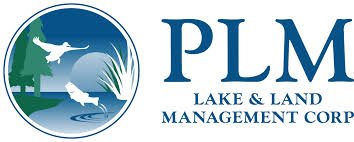
Aquatic Plant Management in the
Sauk River Chain of Lakes
Board Members you can contact regarding Aquatic Invasive Species Awareness & Prevention:
Steve Weeres, 612-229-3941, Angie Tomovic, 320-330-9990, and Wayne Karg 320-444-5619.
Most people call aquatic plants “weeds,” but these plants play a vital role in the overall health of the Sauk River Chain of Lakes (SRCL). Mainly, aquatic plants serve as food and habitat for fish and other wildlife, amongst many other important roles in maintaining the health of a lake ecosystem. However, excessive plant growth and invasive plants can negatively impact recreational access and can upset the overall health of a waterbody. It is important, as stewards of the SRCL, that we do our best to maintain a balance of access and lake health to make sure that the SRCL is accessible for generations to come.
Under Minnesota law, aquatic plants growing in public waters like the SRCL are the property of the state. Because of their value to the lake ecosystem, they may not be destroyed or transplanted unless authorized by the Minnesota Department of Natural Resources (DNR). As such, there are rules and regulations regarding aquatic plant management, and they can be found at:
https://www.dnr.state.mn.us/shorelandmgmt/apg/regulations.html
One of the key limitations to aquatic plant growth is the nutrients available to them. As a result, a long-term solution is to minimize the nutrient run-off from your property:
Minimize or stop using fertilizers and pesticides (even “lake safe”) for lawns. The majority of the fertilizers and pesticides applied to lawns end up in the lake!
Mulch your grass clippings and leaves and keep them out of the lake. Bagging grass removes valuable water-holding organic matter and the nutrients your lawn needs. Mulch your grass clippings and no fertilizer is needed for a healthy lawn!
Minimize watering and aerate your lawn to combat compaction. That’s right! Excessive watering compacts your soil and limits its ability to hold water, requiring more and more watering. If you have to water, water for long cycles less frequently. For example, one watering event per week for 1 hour per zone is better than for 10 minutes per zone every day.
Install buffer zones, water breaks, retention ponds, etc.
Aquatic Plant Management: A Guide for Property Owners was developed by the SRCLA to help understand the partnership between the Association and property owners.
The Stearns Water Conservation District can help!
The Stearns County Soil and Water Conservation District (https://www.stearnscountyswcd.net/) can offer technical (i.e., how to build a buffer zone) and financial support for projects to reduce run-off. In addition, the Sauk River Chain of Lakes Association has a financial support program - click to access the Land Use Assistance Contract/Application.
For more immediate aquatic plant management needs, there are several tools available to you. Again, visit the following website for all of the DNR rules and tools: https://www.dnr.state.mn.us/shorelandmgmt/apg/regulations.html
There are a number of private contractors that can help you as well. The Sauk River Chain of Lakes Association has worked with the following companies in the past couple of years to do assessments and treatments of aquatic vegetation. Feel free to contact them with your questions and needs.
dan@limnopro.com
320-342-2210
Amy Kay
akay@tigrisusa.com
715-891-6798
Solitude Lake Management
888-627-2984
Randy
weedsupmn@yahoo.com
320-557-5757
scubaweedcontrol@gmail.com
612-968-8764
PLM Lake and Land Management Corp.
Midwest Region
218-270-3339
Codey Barby
codey@lakerestoration.com
763-428-9777
Remember: Untimely plant removal causes a net increase in nutrients available and increases the chance of algae growth. You do not own the lake and the DNR has rules in place to help ensure the health of our lake ecosystem. Please follow the rules. Failure to do so can harm the lake ecosystem and can result in enforcement actions by the DNR or the County.








